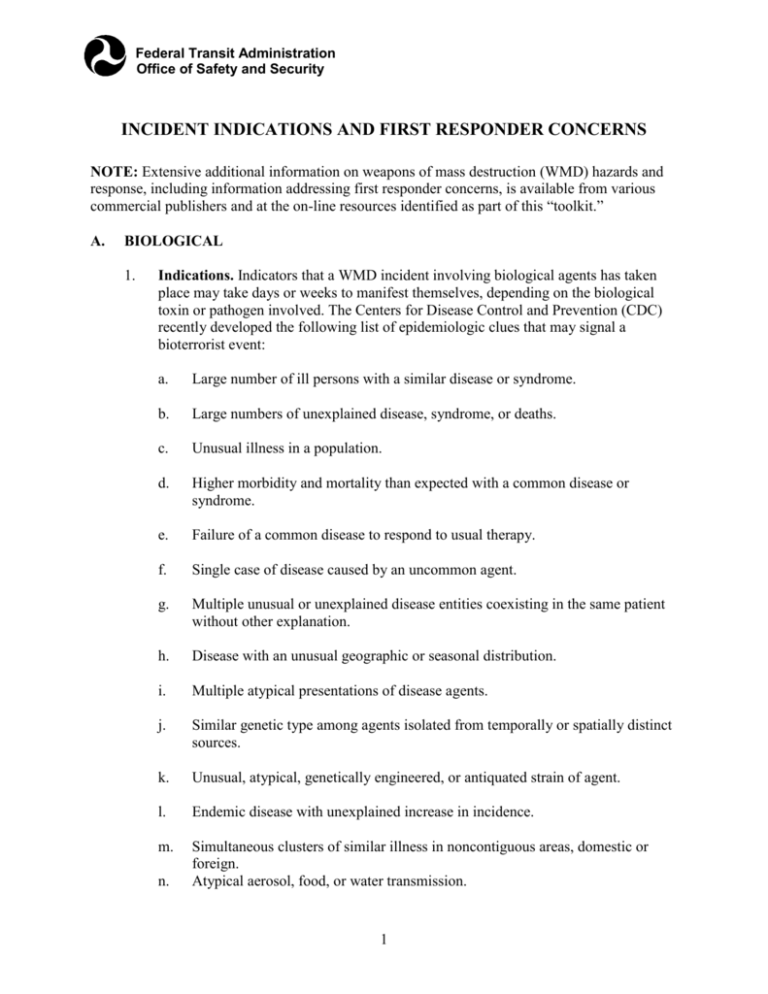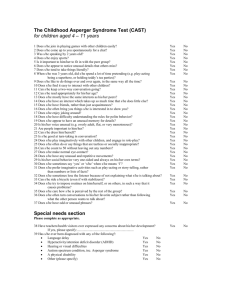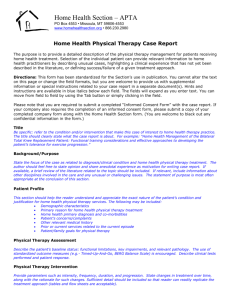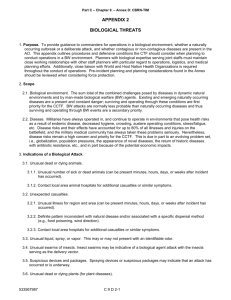INCIDENT INDICATIONS AND FIRST RESPONDER CONCERNS
advertisement

Federal Transit Administration Office of Safety and Security INCIDENT INDICATIONS AND FIRST RESPONDER CONCERNS NOTE: Extensive additional information on weapons of mass destruction (WMD) hazards and response, including information addressing first responder concerns, is available from various commercial publishers and at the on-line resources identified as part of this “toolkit.” A. BIOLOGICAL 1. Indications. Indicators that a WMD incident involving biological agents has taken place may take days or weeks to manifest themselves, depending on the biological toxin or pathogen involved. The Centers for Disease Control and Prevention (CDC) recently developed the following list of epidemiologic clues that may signal a bioterrorist event: a. Large number of ill persons with a similar disease or syndrome. b. Large numbers of unexplained disease, syndrome, or deaths. c. Unusual illness in a population. d. Higher morbidity and mortality than expected with a common disease or syndrome. e. Failure of a common disease to respond to usual therapy. f. Single case of disease caused by an uncommon agent. g. Multiple unusual or unexplained disease entities coexisting in the same patient without other explanation. h. Disease with an unusual geographic or seasonal distribution. i. Multiple atypical presentations of disease agents. j. Similar genetic type among agents isolated from temporally or spatially distinct sources. k. Unusual, atypical, genetically engineered, or antiquated strain of agent. l. Endemic disease with unexplained increase in incidence. m. Simultaneous clusters of similar illness in noncontiguous areas, domestic or foreign. Atypical aerosol, food, or water transmission. n. 1 Federal Transit Administration Office of Safety and Security 2. B. o. Ill people presenting near the same time. p. Deaths or illness among animals that precedes or accompanies illness or death in humans. q. No illness in people not exposed to common ventilation systems, but illness among those people in proximity to the systems. First Responder Concerns a. The most practical method of initiating widespread infection using biological agents is through aerosolization, where fine particles are sprayed over or upwind of a target where the particles may be inhaled. An aerosol may be effective for some time after delivery, since it will be deposited on clothing, equipment, and soil. When the clothing is used later, or dust is stirred up, responding personnel may be subject to “secondary” contamination. b. Biological agents may be able to use portals of entry into the body other than the respiratory tract. Individuals may be infected by ingestion of contaminated food and water, or even by direct contact with the skin or mucous membranes through abraded or broken skin. Use protective clothing or commercially available Level C clothing. Protect the respiratory tract through the use of a mask with biological high-efficiency particulate air (HEPA) filters. c. Exposure to biological agents, as noted above, may not be immediately apparent. Casualties may occur minutes, hours, days, or weeks after an exposure has occurred. The time required before signs and symptoms are observed is dependent on the agent used. While symptoms will be evident, often the first confirmation will come from blood tests or by other diagnostic means used by medical personnel. CHEMICAL 1. Indications. The following may indicate a potential chemical WMD has been released. There may be one or more of these indicators present. a. An unusually large or noticeable number of sick or dead wildlife. These may range from pigeons in parks to rodents near trash containers. b. Lack of insect life. Shorelines, puddles, and any standing water should be checked for the presence of dead insects. c. Considerable number of persons experiencing water-like blisters, weals (like bee-stings), and/or rashes. 2 Federal Transit Administration Office of Safety and Security 2. d. Numbers of individuals exhibiting serious heath problems, ranging from nausea, excessive secretions (saliva, diarrhea, vomiting), disorientation, and difficulty breathing to convulsions and death. e. Discernable pattern to the casualties. This may be “aligned” with the wind direction or related to where the weapon was released (indoors/outdoors). f. Presence of unusual liquid droplets, e.g., surfaces exhibit oily droplets or film or water surfaces have an oily film (with no recent rain). g. Unscheduled spraying or unusual application of spray. h. Abandoned spray devices, such as chemical sprayers used by landscaping crews. i. Presence of unexplained or unusual odors (where that particular scent or smell is not normally noted). j. Presence of low-lying clouds or fog-like condition not compatible with the weather. k. Presence of unusual metal debris—unexplained bomb/munitions material, particularly if it contains a liquid. l. Explosions that disperse or dispense liquids, mists, vapors, or gas. m. Explosions that seem to destroy only a package or bomb device. n. Civilian panic in potential high-profile target areas (e.g., government buildings, mass transit systems, sports arenas, etc.). o. Mass casualties without obvious trauma. First Responder Concerns. The first concern must be to recognize a chemical event and protect the first responders. Unless first responders recognize the danger, they will very possibly become casualties in a chemical environment. It may not be possible to determine from the symptoms experienced by affected personnel which chemical agent has been used. Chemical agents may be combined and therefore recognition of agents involved becomes more difficult. 3 Federal Transit Administration Office of Safety and Security C. NUCLEAR/RADIOLOGICAL 1. Indications. Radiation is an invisible hazard. There are no initial characteristics or properties of radiation itself that are noticeable. Unless the nuclear/radiological material is marked to identify it as such, it may be some time before the hazard has been identified as radiological. 2. First Responder Concerns. While there is no single piece of equipment that is capable of detecting all forms of radiation, there are several different detectors for each type of radiation. Availability of this equipment, in addition to protective clothing and respiratory equipment, is of great concern to first responders. 4










